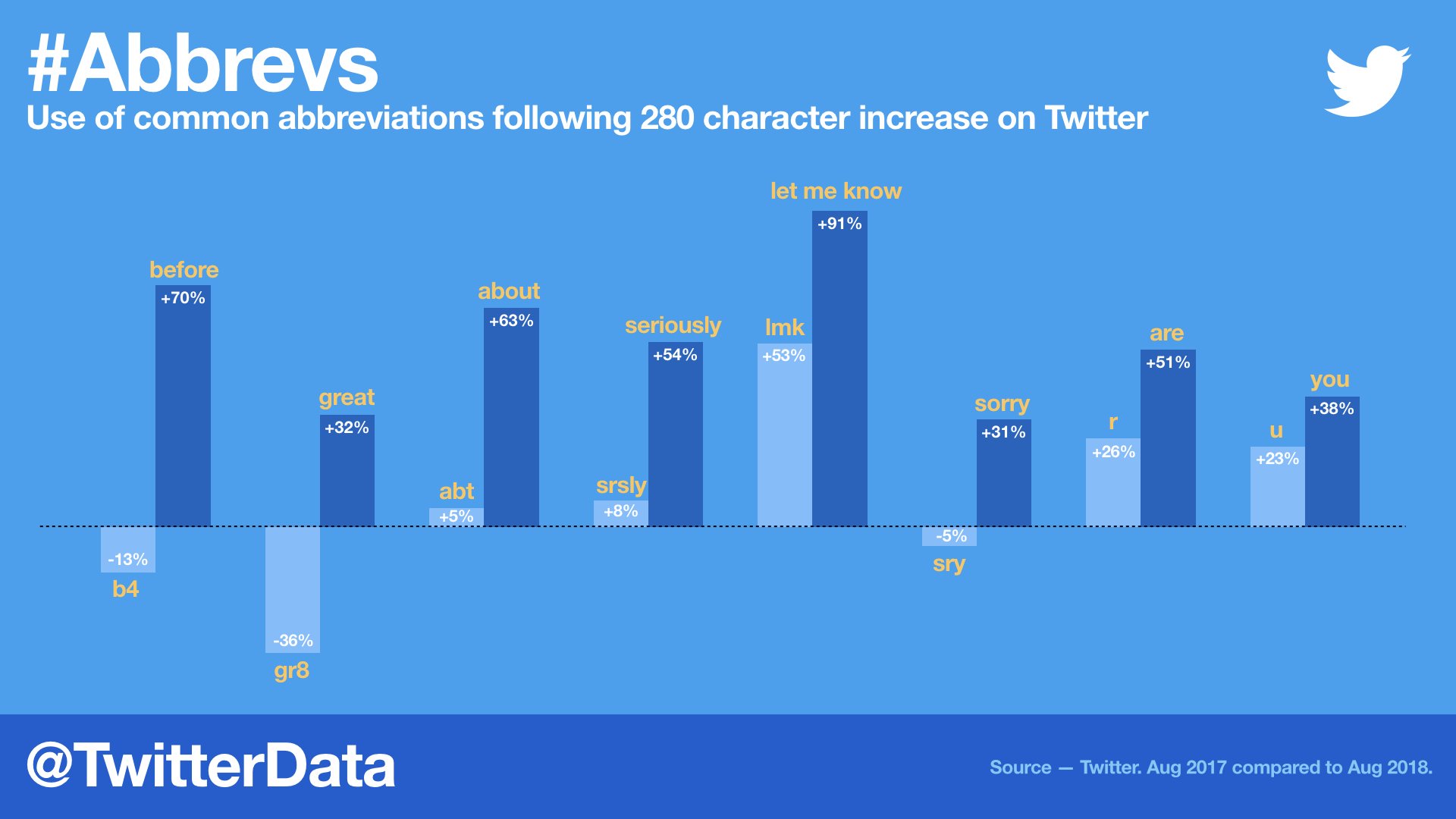Social network platforms such as Twitter and Weibo, are where we post our words/expressions, and is taking an essential role in todays’ Modern Communication.
Interestingly, but not surprisingly, they are also providing a feedback loop to change our ways of communication (and our thinking – but that’s another different story). After all, we are one of those animals with natural herding inclinations.
Taking a very simple example – as Twitter was becoming more popular, people started to lean heavily towards the use of new abbreviations, partially due to its 140-word limit. (Similarly, when Blackberries were popular, certain abbreviations were created, used and spread among professionals in texts & emails)
In 2017, Twitter officially made its “140-word limit” a history [Weibo ended the limit in 2016] and doubled the character limit to 280. One resulting impact is that people are spelling out abbreviations and acronyms more often, according to Twitter’s report.

TwitterData also touted that “people are saying ‘please’ (+54%) and ‘thank you’ (+22%) more.” in the first year of doubling limit.
[Something worth noting on the data – 1) need to consider the difference in total number of tweets 2) need to consider other ways of saying ‘please’ and ‘thank you’…]
It is really nice that people could be more friendly and polite (not excessively tho). It would be even nicer if people could inherit their concise and efficient use of language in the 140-word era & all the other positive impacts Modern Communication made on us.